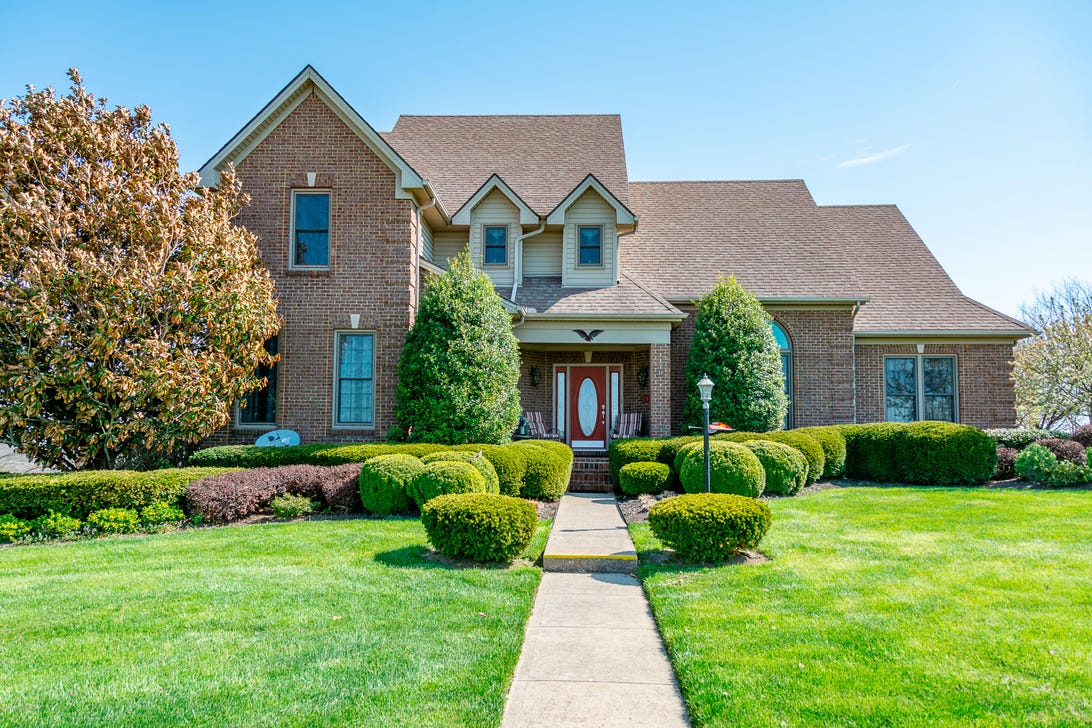
Multiple mortgage refinance rates moved up today, causing some homeowners to wonder if it’s too late to refinance. We saw increases in the average rates for 10-year fixed, 15-year fixed and 30-year fixed refinances. With rates expected to rise throughout 2022, now might be a good time to act on a refinance. But make sure to first think about your personal goals and circumstances, and compare offers to find a lender who can best meet your needs.
30-year fixed-rate refinance
The average 30-year fixed refinance rate right now is 3.75%, an increase of 10 basis points compared to one week ago. (A basis point is equivalent to 0.01%.) A 30-year fixed refinance will typically have lower monthly payments than a 15-year or 10-year refinance. If you’re having difficulties making your monthly payments currently, a 30-year refinance could be a good option for you. However, interest rates for a 30-year refinance will typically be higher than rates for a 15-year or 10-year refinance. It’ll also take you longer to pay off your loan.
15-year fixed-rate refinance
The average rate for a 15-year fixed refinance loan is currently 3.15%, an increase of 17 basis points over last week. With a 15-year fixed refinance, you’ll have a larger monthly payment than a 30-year loan. On the other hand, you’ll save money on interest, since you’ll pay off the loan sooner. Interest rates for a 15-year refinance also tend to be lower than that of a 30-year refinance, so you’ll save even more in the long run.
10-year fixed-rate refinance
The average rate for a 10-year fixed refinance loan is currently 3.11%, an increase of 12 basis points compared to one week ago. Compared to a 30-year and 15-year refinance, a 10-year refinance will usually have a lower interest rate but higher monthly payment. A 10-year refinance can be a good deal, since paying off your house sooner will help you save on interest in the long run. Just be sure to carefully consider your budget and current financial situation to make sure that you can afford a higher monthly payment.
Where rates are headed
We started 2022 with low refinance rates, but there’s been an uptick recently due to two major factors: inflation and economic growth. That said, rates can always rise and fall for many reasons. The spread of omicron, for instance, kept rates low throughout December and the start of the new year. Overall, rates are expected to go up this year, particularly with the Federal Reserve’s decision to reduce its bond purchases.
We track refinance rate trends using information collected by Bankrate, which is owned by CNET’s parent company. Here’s a table with the average refinance rates supplied by lenders across the country:
Average refinance interest rates
| Product | Rate | A week ago | Change |
|---|---|---|---|
| 30-year fixed refi | 3.75% | 3.65% | +0.10 |
| 15-year fixed refi | 3.15% | 2.98% | +0.17 |
| 10-year fixed refi | 3.11% | 2.99% | +0.12 |
Rates as of Jan. 28, 2022.
How to find the best refinance rate
It’s important to understand that the rates advertised online may not apply to you. Though current market conditions will be a factor, your particular interest rate will depend largely on your application and credit history.
To get the best interest rates, you’ll typically need a high credit score, low credit utilization ratio, and a history of making consistent and on-time payments. Researching interest rates online is always a good idea, but you’ll need to connect with a mortgage professional to get your exact refinance rate. Also remember to account for potential fees and closing costs.
You should also know that many lenders have had stricter requirements when it comes to approving loans in the past few months. If you have a low credit score or a poor credit history, you might have trouble getting a refinance at the lowest interest rates.
Before applying for a refinance, you should make your application as strong as possible in order to get the best rates available. If you haven’t already, try to improve your credit by monitoring your credit reports, using credit responsibly, and managing your finances carefully. Don’t forget to speak with multiple lenders and shop around to find the best rate.
When to consider a mortgage refinance
In order for a refinance to make sense, you’ll generally want to get a lower interest rate than your current rate. Aside from interest rates, changing your loan term is another reason to refinance. It’s true that in the past year, interest rates have been at a historic low. But when deciding whether to refinance, be sure to take into account other factors besides market interest rates.
Make sure to consider your goals and financial situation, including how long you plan to stay in your current home. It’s helpful to have a specific goal for a refinance — such as decreasing your monthly payment or adjusting the term of your loan. Also keep in mind that closing costs and other fees may require an upfront investment.
Some lenders have tightened their requirements in recent months, so you may not be able to get a refinance at the posted interest rates — or even a refinance at all — if you don’t meet their standards. Refinancing can be a great move if you get a good rate or can pay off your loan sooner — but consider carefully whether it’s the right choice for you.

